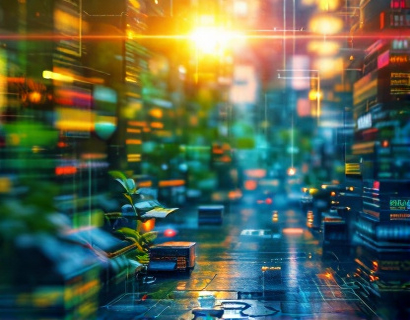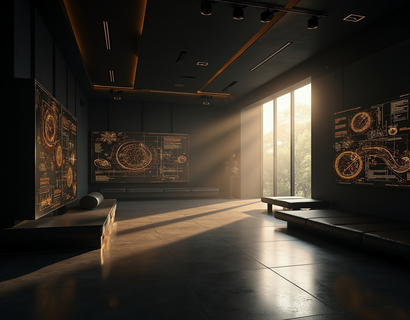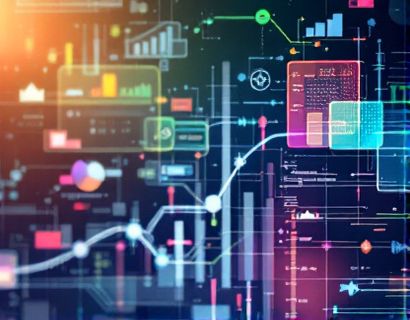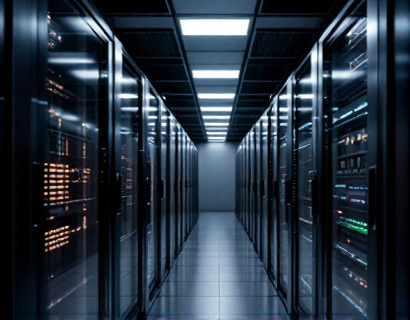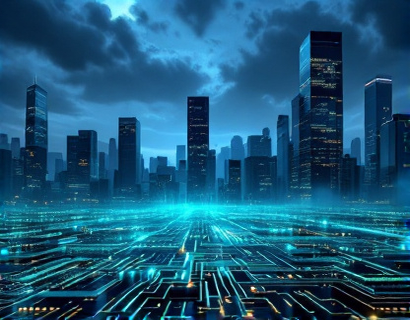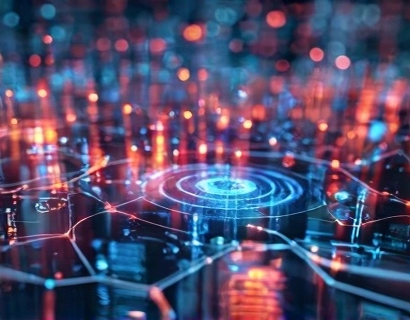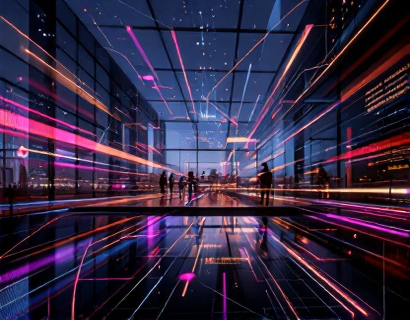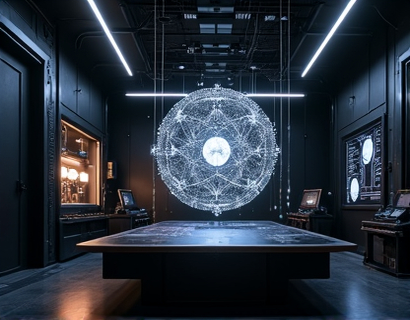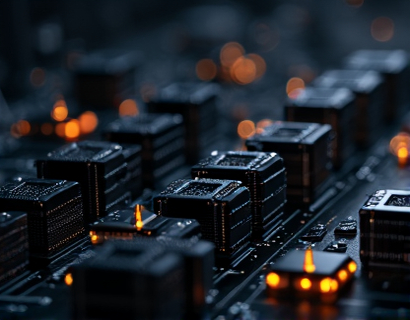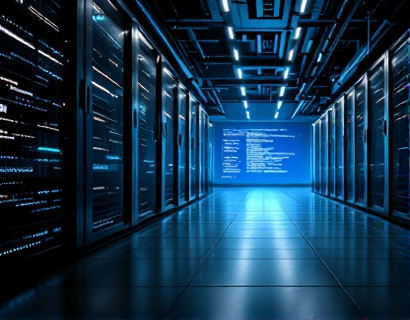Maximize Your Indoor Garden: Advanced Tech for Optimal Solarium Ecosystems
In the quest for a thriving indoor garden, the integration of advanced technology plays a pivotal role in transforming light, climate, and automation into a symbiotic ecosystem that ensures optimal plant growth and sustainability. This article delves into the cutting-edge solutions that can elevate your indoor gardening experience, creating a high-tech garden oasis where technology and nature seamlessly converge. By leveraging innovative technologies, gardeners can tailor their environments to meet the specific needs of their plants, resulting in unparalleled growth and sustainability.
Optimizing Light for Plant Growth
Light is one of the most critical factors in plant growth, and indoor gardens often face the challenge of providing adequate and appropriate lighting. Advanced LED grow lights have revolutionized the way we illuminate indoor gardens. These lights are energy-efficient, produce minimal heat, and can be tailored to emit specific wavelengths that are most beneficial for different stages of plant development. For instance, blue spectrum lights are ideal for vegetative growth, promoting strong stems and leaves, while red spectrum lights are better suited for flowering and fruiting stages, enhancing bloom size and yield.
Smart lighting systems take this a step further by incorporating sensors and automation. These systems can adjust light intensity and spectrum based on the time of day, plant type, and growth stage, ensuring that plants receive the exact light conditions they need at any given moment. Some systems even allow for remote control via smartphone apps, giving gardeners the flexibility to manage their indoor gardens from anywhere.
Climate Control for Ideal Growing Conditions
Maintaining the right climate within an indoor garden is equally crucial. Temperature, humidity, and air circulation all play significant roles in plant health and growth. Advanced climate control systems use a combination of sensors, actuators, and smart algorithms to create an optimal environment.
Temperature control is achieved through precise heating and cooling mechanisms. Thermostats and temperature sensors ensure that the environment remains within the ideal range for the specific plants being grown. For example, tropical plants may require warmer temperatures, while some herbs and leafy greens thrive in cooler conditions.
Humidity control is another essential aspect. High humidity can lead to fungal diseases, while low humidity can cause plants to dry out. Advanced systems use humidifiers and dehumidifiers, controlled by humidity sensors, to maintain the perfect balance. Some systems can even simulate morning dew or evening drops in humidity to mimic natural conditions.
Air circulation is vital for preventing mold and ensuring even light distribution. Fans and air circulators, controlled by smart systems, can create a gentle breeze that keeps plants healthy and robust. These systems can also help in reducing the risk of pest infestations by preventing stagnant air.
Automation and Smart Systems
Automation is the backbone of a modern indoor garden, streamlining processes and reducing the need for manual intervention. Smart irrigation systems, for example, use soil moisture sensors to determine when plants need water, delivering precise amounts of water directly to the roots. This not only conserves water but also prevents overwatering, a common issue in indoor gardening.
Fertigation systems integrate fertilization into the irrigation process, ensuring that plants receive the necessary nutrients at the right times. These systems can be programmed to release specific nutrients based on the plants' growth stages and nutrient requirements, promoting healthy growth and maximizing yields.
Integrated control panels and central hubs allow gardeners to monitor and manage all aspects of their indoor garden from a single interface. These hubs can connect various sensors and devices, providing real-time data and alerts. Some systems even use machine learning to optimize settings based on historical data and plant responses, continuously improving the growing conditions.
Customizable Environments for Unique Needs
Every indoor garden is unique, with different plants having specific requirements. Advanced technology allows for the creation of customizable environments that cater to these diverse needs. For instance, some systems offer modular setups where gardeners can select and combine different components to create a tailored growing space.
Vertical gardening systems, for example, maximize space by growing plants in layers. These systems can be equipped with automated watering and lighting, ensuring that each level receives the appropriate conditions. Hydroponic and aeroponic setups further enhance efficiency by delivering nutrients directly to the roots, reducing water usage and increasing growth rates.
For those with limited space, compact and portable systems are available. These can be easily set up in small rooms or even on balconies, using advanced technology to create a microclimate that supports plant growth. Some portable systems come with built-in climate control and lighting, making them ideal for urban gardeners.
Sustainability and Energy Efficiency
Sustainability is a key consideration in modern indoor gardening. Advanced technologies not only optimize plant growth but also promote environmentally friendly practices. Energy-efficient LED lights, for instance, consume significantly less power than traditional grow lights, reducing the carbon footprint of indoor gardens.
Renewable energy sources, such as solar panels, can be integrated into the system to power lighting and climate control devices. Some systems even include energy management features that optimize power usage based on the availability of renewable energy, further enhancing sustainability.
Water conservation is another critical aspect. Closed-loop hydroponic systems recycle water, minimizing waste and reducing the overall water footprint. Advanced filtration and nutrient recovery systems ensure that water and nutrients are used efficiently, making indoor gardening a more sustainable practice.
Enhancing Plant Health and Yield
The combination of optimized light, climate, and automation leads to significant improvements in plant health and yield. Plants grown in these advanced environments tend to be more robust, with stronger stems and leaves, and higher resistance to diseases and pests.
Data-driven insights from smart systems allow gardeners to make informed decisions, adjusting conditions to maximize growth and quality. For example, monitoring CO2 levels and adjusting them as needed can further enhance photosynthesis and plant growth. Some advanced systems even incorporate CO2 generators and scrubbers to maintain optimal levels.
In terms of yield, the precise control over growing conditions can lead to faster growth cycles and higher harvest rates. For commercial growers, this translates to increased productivity and profitability. For hobbyists, it means a more rewarding and successful gardening experience.
Future Trends in Indoor Gardening Technology
The future of indoor gardening technology is exciting, with ongoing innovations promising even greater advancements. One area of focus is the integration of artificial intelligence (AI) to create truly intelligent growing environments. AI can analyze vast amounts of data from sensors and historical growth patterns to predict and optimize growing conditions in real-time.
Another trend is the development of biophilic design principles, where indoor gardens are designed to not only support plant growth but also enhance the well-being of the gardeners. This includes incorporating natural elements, improving air quality, and creating aesthetically pleasing spaces.
Furthermore, the miniaturization of technology is making advanced systems more accessible and affordable. Compact sensors, micro-controllers, and wireless communication modules enable gardeners to implement sophisticated setups without the need for extensive technical knowledge.
As the demand for sustainable and efficient food production grows, indoor gardening technology will continue to evolve, making it an essential tool for both amateur and professional gardeners alike.




